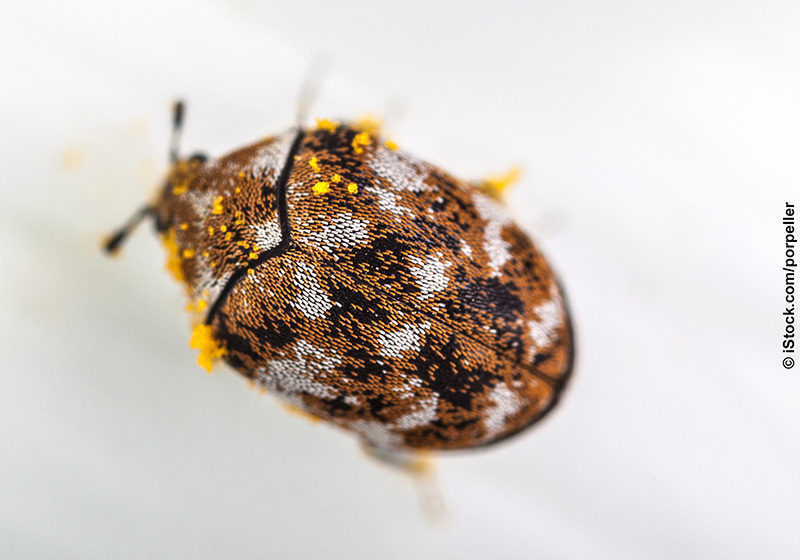Carpet Beetles
What are Carpet Beetles?
Slightly smaller but shaped like ladybugs, carpet beetles can quickly populate inside a structure. Carpet beetle larva are ¼-inch in length, light brown in color with tufts of hair on their bodies. In our experience, the varied carpet beetle is the most commonly found in western Oregon.
Clues that you might have them:
Adult beetles, or more commonly carpet beetle larvae, in closets infesting wool, leather, and fur clothing. They also infest food such as cereals (including cereal-based dry pet foods), corn and rye meal, granola and ‘trail mix’-type foods, red pepper and other spices.
If you leave them alone…
They can ruin expensive wool (including cashmere), leather clothing and grain-based foods. In institutions such as museums or other facilities that house animal trophies or insect collections, or homes with taxidermy collections, carpet beetles can easily damage or destroy exhibits of such collections. The presence of carpet beetles can also cause dermatitis in humans. Carpet beetle infestations can also be indicative of mice or rat issues in structures, as carpet beetle larvae will feed off of the skin and fur of dead carcasses in walls, ceilings and subareas.
What you need to do about them:
Try to identify the interior area(s) where carpet beetle adults or larva are most numerous, especially in closets and cabinets where woolens or other animal fiber products or clothing may be stored. If problems exist in the kitchen, check food storage areas.
When do I call Leupitz Pest Control?
To reduce the risk of further damage to property or health hazards, call Leupitz Pest Control immediately at (503) 362-8100 to put in place a regimen to mitigate the continued spread of carpet beetles and the harm that they cause.
What can I do?
Prevention & Control
Generally, carpet beetle infestations indicate a source point of infestation somewhere in the structure, whether it be an infested food product, woolen fabrics, natural fiber carpeting, etc. Carpet beetles will also feed off of bees’ nests (especially paper nests such as hornet and yellow jacket nests), bird nests, and dead rodent carcasses. Finding the source of the problem, if possible, is a key factor in control.

More Details
The two most common carpet beetles encountered in western Oregon are the black carpet beetle (Attagenus unicolor) and the slightly smaller varied carpet beetle (Anthrenus verbasci). Carpet beetles go through a complete metamorphosis in their life cycle (egg, pupa, larva, and adult). The larvae of both beetles are light brown in color and look hairy when seen under a magnifying glass, with either long hair toward the rear end of the black carpet beetle larva and shorter tufts on the rear end of the varied carpet beetle larva. Varied carpet beetle adults have mottled, calico-colored patterns of brown, black, and white on their dorsal side. In the spring, adult beetles will be attracted to light and oftentimes collect on window sills inside of a structure.
